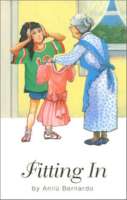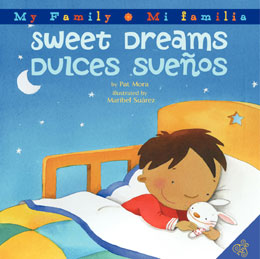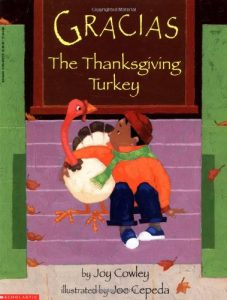 Describes the way of life of Mexican American families and their children who work as migrant agricultural laborers in Texas.
Describes the way of life of Mexican American families and their children who work as migrant agricultural laborers in Texas.
Latinx in US
The Smell Of Old Lady Perfume
 Claudia Guadalupe Martinez’s debut novel for young adults is a bittersweet story about death, family, and the resilient emotional strength of the human heart. Chela Gonzalez, the book’s narrator, is a nerd and a soccer player who can barely contain her excitement about starting the sixth grade. But nothing is as she imagined-her best friend turns on her to join the popular girls and they all act like Chela doesn’t exist. She buries herself in schoolwork and in the warm comfort of her family. To Chela, her family is like a solar system, with her father the sun and her mother, brothers, and sister like planets rotating all around him. It’s a small world, but it’s the only one she fits in.But that universe is threatened when her strong father has a stroke. Chela’s grandmother moves in to help the family. The smell of her old lady perfume invades the house. That smell is worse than Sundays. Sundays were sad, but they went just as sure as they came. Death was a whole other thing, and Chela doesn’t understand that’s what everyone is waiting for. In her grief and worry, Chela begins to discover herself and find her own strength.Claudia Guadalupe Martinez was born in El Paso, Texas. She learned that letters form words from reading the subtitles of old Westerns for her father. She went on to graduate from college and moved to Chicago to become one of the city’s youngest nonprofit executives.
Claudia Guadalupe Martinez’s debut novel for young adults is a bittersweet story about death, family, and the resilient emotional strength of the human heart. Chela Gonzalez, the book’s narrator, is a nerd and a soccer player who can barely contain her excitement about starting the sixth grade. But nothing is as she imagined-her best friend turns on her to join the popular girls and they all act like Chela doesn’t exist. She buries herself in schoolwork and in the warm comfort of her family. To Chela, her family is like a solar system, with her father the sun and her mother, brothers, and sister like planets rotating all around him. It’s a small world, but it’s the only one she fits in.But that universe is threatened when her strong father has a stroke. Chela’s grandmother moves in to help the family. The smell of her old lady perfume invades the house. That smell is worse than Sundays. Sundays were sad, but they went just as sure as they came. Death was a whole other thing, and Chela doesn’t understand that’s what everyone is waiting for. In her grief and worry, Chela begins to discover herself and find her own strength.Claudia Guadalupe Martinez was born in El Paso, Texas. She learned that letters form words from reading the subtitles of old Westerns for her father. She went on to graduate from college and moved to Chicago to become one of the city’s youngest nonprofit executives.
The Year Of Our Revolution: Love And Rebellion In The 1960s: Stories And Poems

Teenaged Mary Ellen-known to her parents as María Elenita-is pulling away from their conservative Puerto Rican world, towards dreams of rock music, political protest, and first love. But as she learns about the “secret” lives of her parents and other adults, she finds that the taste of freedom is not so sweet. Judith Cofer’s new collection-drawn from her own adolescence, with a novella included especially for the paperback edition-will speak to readers of both sexes, and all races.”…her descriptions of barrio life with a pervasive current of sensuality and rebellion…there is wisdom aplenty in this radiant collection.” -Publishers Weekly
Triple Banana Split Boy / El Nino Goloso
 ”How come you can have sweets and I can’t?” Enrique asks the hummingbirds as they flutter over the flowers in the garden. His craving for sugar is getting out of control, and his father has forbidden him to eat anything sweet. Enrique’s birthday is coming up and he won’t be allowed to help his grandma with her baking. It’s not fair! Enrique’s cravings multiply by the minute. Even numbers in his math book start to look like yummy desserts. His life is over! The next day, though, he comes up with an ingenious plan to outwit his father. Unfortunately, his mother soon catches on. But she has a plan of her own. On Mondays and Fridays only, after school, Enrique may have any dessert he likes, but none during the rest of the week. What a sweet deal!On his first outing with his mother, Enrique orders a huge triple banana split, with strawberry, chocolate and vanilla scoops of ice cream, nuts, sprinkles and chocolate syrup. Later that night, Enrique’s stomach aches, and El Coco, a fearsome creature with a huge mouth and sticky hair, haunts his dreams. Enrique’s mother wonders if he will ever learn to eat in moderation. Will he be able to bake with Grandma? And what about having a special treat on his birthday? Lucha Corpi’s poetic prose is combined with Lisa Field’s enticing illustrations in this engaging story that will resonate with kids and their parents as they struggle to balance healthy eating habits with the natural desire for sweets.
”How come you can have sweets and I can’t?” Enrique asks the hummingbirds as they flutter over the flowers in the garden. His craving for sugar is getting out of control, and his father has forbidden him to eat anything sweet. Enrique’s birthday is coming up and he won’t be allowed to help his grandma with her baking. It’s not fair! Enrique’s cravings multiply by the minute. Even numbers in his math book start to look like yummy desserts. His life is over! The next day, though, he comes up with an ingenious plan to outwit his father. Unfortunately, his mother soon catches on. But she has a plan of her own. On Mondays and Fridays only, after school, Enrique may have any dessert he likes, but none during the rest of the week. What a sweet deal!On his first outing with his mother, Enrique orders a huge triple banana split, with strawberry, chocolate and vanilla scoops of ice cream, nuts, sprinkles and chocolate syrup. Later that night, Enrique’s stomach aches, and El Coco, a fearsome creature with a huge mouth and sticky hair, haunts his dreams. Enrique’s mother wonders if he will ever learn to eat in moderation. Will he be able to bake with Grandma? And what about having a special treat on his birthday? Lucha Corpi’s poetic prose is combined with Lisa Field’s enticing illustrations in this engaging story that will resonate with kids and their parents as they struggle to balance healthy eating habits with the natural desire for sweets.
The Big Spanish Heritage Activity Book
This comprehensive activity book for children offers action-packed fun highlighting the contributions of the Hispanic Colonial settlers in the multi-cultural environment of the American Southwest. There are eight sections: The Age of Discovery, The New World, Colonial Life, The Camino Real, The Native Americans, Hispanic Art, Hispanic Architecture, and Hispanic Crafts. Projects are presented in a variety of formats such as illustrations to complete, word searches, matching names and ideas, picture construction, puzzles, and more. This entertaining activity book, richly illustrated by the author, provides a wonderful introduction into the romance and excitement of the Hispanic settlement of America.
Gracias The Thanksgiving Turkey
N Is for Navidad
Bienvenidos! to a celebration of Christmas, Latino-style! From the ngel (angel) hung above the door to the zapatos (shoes) filled with grass for the wise men s camels, each letter in this festive alphabet introduces children to a Spanish word, and each colorful page takes them through another joyous aspect of the 22 days of the traditional holiday. Vibrant art from acclaimed illustrator Joe Cepeda beautifully complements the lively, rhythmic text to bring the reader a wealth of heritage and a season of light! Feliz Navidad!
Fitting In

Written with deep understanding and compassion, these are the bittersweet tales of young Cuban immgrants adjusting to life in the United States as they cross the threshold into young womanhood.
Sweet Dreams/Dulces Suenos (My Family: Mi Familia)

Shh, shh, close your eyes.
Shh . . . shh . . . Cierra los ojitos.
Outside, the rabbits are sleeping,
Afuera, los conejitos están durmiendo
and the birds, and the squirrels.
junto con los pajaritos, y las ardillas.
Inside, Grandma tucks
us snugly into bed.
Adentro, Abuelita nos da
las buenas noches.
The stars and moon
are shining bright.
Las estrellas y la
luna brillan.
Sweet dreams!
¡Dulces sueños!
As warm and comforting as a grandmother’s voice, this endearing book in the My Family/Mi familia series makes bedtime a soothing family tradition.
Este encantador libro de la serie My Family/Mi familia, tan cálido y reconfortante como la voz de una abuela, ayuda a convertir la hora de dormir en una armoniosa tradición familiar.
Angel City
 Old man Joseph never imagined a family could start this way. When he finds a baby abandoned on a lonely L.A. street, he vows to raise it as his own. He’s an old farmer and knows nothing of parenting, even less about raising a Mexican baby.Yet Joseph keeps his promise and with time he realizes that even in the darkest barrio, there is a world to explore, songs and stories to be shared. Even in the darkest barrio, there is love.
Old man Joseph never imagined a family could start this way. When he finds a baby abandoned on a lonely L.A. street, he vows to raise it as his own. He’s an old farmer and knows nothing of parenting, even less about raising a Mexican baby.Yet Joseph keeps his promise and with time he realizes that even in the darkest barrio, there is a world to explore, songs and stories to be shared. Even in the darkest barrio, there is love.
Illustrated by Caldecott-Honor Medal winner Carol Byard and beautifully told by Tony Johnston, Angel City is a moving tribute to the strength of family no matter its form.

